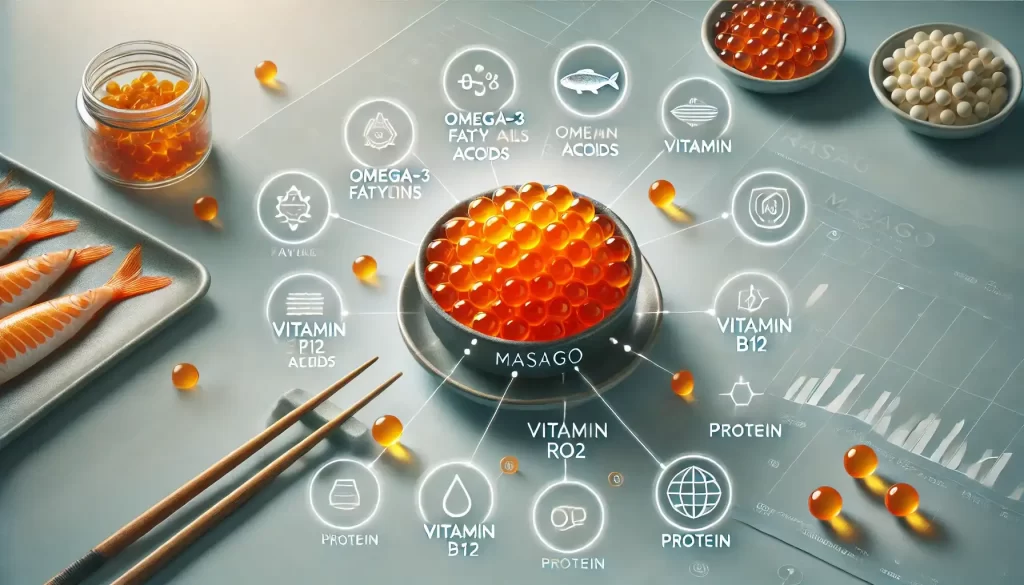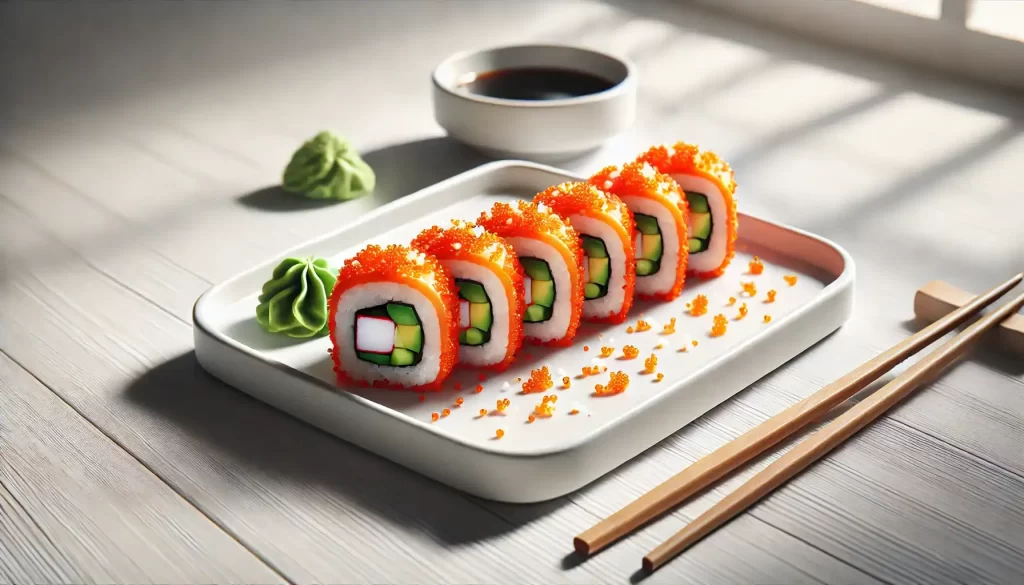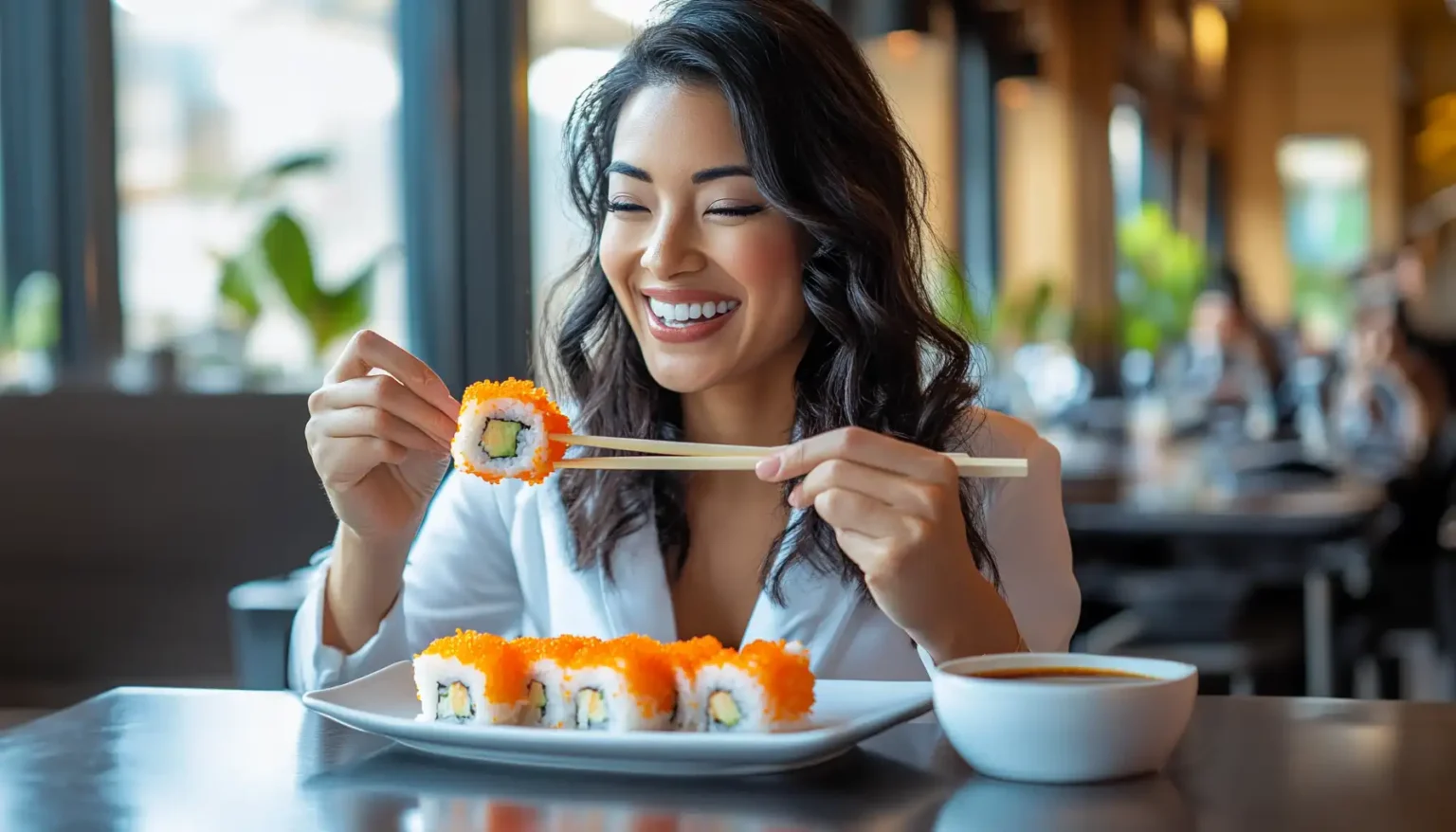In the realm of global cuisine, few ingredients are as intriguing and versatile as Masago, also known as capelin roe. This vibrant and nutrient-packed delicacy, harvested from the capelin fish, has earned its place as a staple in sushi rolls, poke bowls, and other Asian-inspired dishes. Masago is not only a treat for the taste buds but also a powerhouse of essential nutrients, including omega-3 fatty acids, vitamin B12, and high-quality protein.
What sets Masago apart isn’t just its flavor and culinary appeal but its role in bridging nutrition and indulgence. Its semi-crunchy texture, subtle saltiness, and visual appeal make it a sought-after ingredient by chefs and food enthusiasts alike. Yet, while Masago boasts an impressive nutritional profile, it also comes with considerations, such as its high sodium content and ecological impact, which deserve attention.
In this guide, we will dive deep into what makes Masago a unique ingredient, exploring its origins, health benefits, culinary uses, and potential drawbacks. Whether you’re a foodie curious about its flavor or a health-conscious individual looking to understand its benefits, this article will provide everything you need to know about this fascinating fish roe.
What is Masago?
Masago refers to the edible eggs, or roe, of the capelin fish (Mallotus villosus), a small forage fish found in the icy waters of the North Atlantic, North Pacific, and Arctic Oceans. As a delicacy, Masago is cherished for its unique culinary properties, offering a combination of mild, salty flavor and a semi-crunchy texture that enhances a variety of dishes.
These tiny eggs are harvested from female capelin fish when their roe is fully developed, but before they have spawned. This precise timing ensures that the roe is at its peak quality for consumption and culinary use.
Key Characteristics of Masago
- Natural Appearance and Presentation
Naturally pale yellow, Masago is often dyed in vibrant shades of orange, red, or green to make dishes visually striking. These bold colors are especially popular in sushi and Asian-inspired presentations. - Culinary Versatility
Masago is commonly used in sushi rolls, poke bowls, rice dishes, and noodle recipes. It is also a popular garnish, adding both flavor and texture to appetizers and salads. - Enhanced Flavor Combinations
To diversify its flavor profile, Masago is frequently mixed with ingredients like:- Wasabi for a spicy kick.
- Squid ink for a richer, umami taste.
- Ginger for a tangy contrast.
As a versatile ingredient, Masago has become a staple in many kitchens, valued for its ability to elevate dishes both visually and gastronomically. Whether you enjoy its semi-crunchy texture in a sushi roll or its subtle saltiness in a poke bowl, Masago offers a distinct culinary experience that sets it apart from other types of roe.

Nutritional Benefits of Masago (Capelin Roe)
Masago isn’t just a flavorful addition to dishes—it’s also a nutritional powerhouse, packed with essential nutrients that contribute to overall health and well-being. Its unique combination of proteins, vitamins, and healthy fats makes it a standout ingredient for those seeking both taste and nutrition.
1. High-Quality Protein
- Masago is an excellent source of high-quality protein, with just one ounce (28 grams) delivering 6 grams of protein.
- As a complete protein, Masago provides all nine essential amino acids required for muscle repair, energy production, and overall body function.
- Its protein content makes it a satiating ingredient, helping to manage hunger and support weight management.
2. Rich in Omega-3 Fatty Acids
- Masago contains omega-3 fatty acids, a type of polyunsaturated fat essential for:
- Heart Health: Reducing the risk of cardiovascular diseases.
- Brain Function: Supporting cognitive health and reducing the risk of neurodegenerative diseases.
- Inflammation Control: Regulating inflammatory responses in the body.
- Omega-3s are crucial for maintaining hormonal balance and immune health, making Masago an excellent dietary addition for overall wellness.
3. Excellent Source of Vitamin B12
- Vitamin B12 plays a vital role in:
- Red Blood Cell Production: Preventing anemia and ensuring proper oxygen transport.
- DNA Synthesis: Supporting genetic material repair and replication.
- Nerve Function: Maintaining healthy nervous system operations.
- A single serving of Masago provides 47% of the daily value (DV) for vitamin B12, making it a potent dietary source for those who may struggle to meet their daily requirements.
4. Packed with Selenium
- Selenium, a powerful antioxidant found in Masago, offers several health benefits:
- Thyroid Support: Assisting in hormone production and metabolism regulation.
- Immune Function: Enhancing the body’s ability to fight infections and repair damaged cells.
- Oxidative Stress Reduction: Neutralizing free radicals to protect against chronic diseases.
Masago’s selenium content makes it a valuable ingredient for boosting antioxidant defenses and maintaining overall health.
Incorporating Masago into your diet not only enhances flavor but also delivers significant nutritional benefits, making it a smart choice for those seeking to improve their health naturally. Whether for its protein, omega-3s, or essential vitamins, Masago offers an impressive array of nutrients in every bite.
How Masago Compares to Tobiko
Masago and tobiko, the roe of flying fish, are both popular ingredients in sushi and other Asian dishes. While they share some similarities in appearance and use, these two types of fish roe have distinct characteristics that set them apart.
1. Size and Texture
- Masago: The eggs are smaller and have a softer, less crunchy texture.
- Tobiko: The eggs are larger and offer a pronounced crunch, adding a unique texture to dishes.
2. Color
- Masago: Naturally pale yellow but often dyed bright shades of orange, red, or green to enhance visual appeal.
- Tobiko: Naturally bright red, with no need for additional coloring in most cases, though it is occasionally dyed to create variations.
3. Flavor Profile
- Masago: Mildly salty with a subtle oceanic flavor. It’s less intense, making it a versatile addition to many dishes.
- Tobiko: Sweet, smoky, and salty, offering a more complex flavor that stands out in recipes.
4. Cost and Availability
- Masago: More affordable, making it a popular substitute for tobiko in sushi rolls.
- Tobiko: More expensive, often viewed as a premium ingredient in high-end sushi preparations.
Why Masago is Often Substituted for Tobiko
Masago’s affordability and availability make it a practical alternative to tobiko, especially for sushi rolls or dishes where cost is a concern. While it may lack the crunch and complexity of tobiko, Masago delivers similar visual and flavor elements, ensuring that dishes remain delicious and visually appealing.
For chefs and home cooks alike, choosing between Masago and tobiko depends on the desired texture, flavor intensity, and budget. Both are excellent in their own right, but understanding these differences ensures you pick the right ingredient for your dish.
| Feature | Masago | Tobiko |
|---|---|---|
| Size | Smaller, less crunchy | Larger, more crunchy |
| Color | Naturally pale yellow; dyed | Bright red (natural) |
| Flavor | Mild and slightly salty | Sweet, smoky, and salty |
| Cost | Less expensive | More expensive |

Downsides and Precautions When Consuming Masago
1. High Sodium Content
Masago is often mixed with salty ingredients like soy sauce, making it unsuitable for individuals sensitive to sodium or managing high blood pressure.
2. Risk of Allergic Reaction
As a seafood product, Masago can trigger allergic reactions in people sensitive to fish or shellfish. Symptoms may include rashes, difficulty breathing, or low blood pressure.
3. Environmental Concerns
The practice of harvesting female capelin for their roe raises ecological concerns about overfishing and bycatch of other marine species. Opt for sustainably sourced Masago whenever possible.
How to Use Masago in Your Diet
Masago’s versatility and unique flavor make it an exciting ingredient to incorporate into a variety of dishes. Its mild saltiness and semi-crunchy texture can elevate everything from sushi to appetizers. Here are some creative ways to use Masago in your diet, along with an easy recipe to try at home.
1. Sushi Topping
Masago is a classic addition to sushi rolls, providing both visual appeal and a subtle salty crunch.
- How to Use: Add a spoonful of Masago to the top of homemade sushi rolls filled with avocado, cucumber, and imitation crab for a restaurant-quality touch.
2. Poke Bowls
Enhance the savory profile of your poke bowls with a sprinkling of Masago.
- How to Use: Top a poke bowl featuring tuna, salmon, or tofu with Masago for added flavor and texture. Pair it with seaweed, edamame, and sesame seeds for a balanced meal.
3. Rice Dishes
Masago adds a delightful pop of flavor to rice-based dishes.
- How to Use: Stir Masago into fried rice with vegetables and scrambled eggs, or serve it over steamed jasmine rice with a drizzle of soy sauce.
4. Appetizers
Masago pairs beautifully with cheeses and crackers, making it a sophisticated addition to appetizers.
- How to Use: Create a charcuterie board with cream cheese, crackers, smoked salmon, and Masago. The contrast of textures and flavors will impress your guests.
5. Noodle Dishes
Add a salty twist to your Asian-style noodle recipes with Masago.
- How to Use: Toss Masago into udon noodles with a light sesame-soy sauce and garnish with scallions for a quick and flavorful meal.
Masago Cream Cheese Sushi Roll Recipe
Ingredients:
- 1 cup cooked sushi rice
- 1 sheet nori (seaweed)
- 2 tablespoons Masago
- 1/4 avocado, thinly sliced
- 2 ounces imitation crab or cooked shrimp
- 1 tablespoon cream cheese
- Soy sauce (for serving)

Instructions:
- Prepare the Base: Lay the nori sheet on a sushi mat with the shiny side facing down. Spread an even layer of cooked sushi rice over the nori, leaving 1 inch at the top edge bare.
- Add Fillings: Arrange the avocado, crab, and cream cheese in a line near the bottom edge of the rice-covered nori.
- Roll: Using the sushi mat, gently roll the nori sheet into a tight cylinder. Seal the edge with a bit of water.
- Top with Masago: Spread the Masago evenly across the top of the roll for added flavor and visual appeal.
- Slice and Serve: Cut the roll into bite-sized pieces using a sharp knife. Serve with soy sauce for dipping.
By experimenting with these ideas and trying simple recipes, you can enjoy the unique taste and texture of Masago in creative and delicious ways. Its versatility makes it a delightful addition to both everyday meals and special occasions.
FAQs About Masago
1. What does Masago taste like?
Masago has a mild, slightly salty flavor with a hint of sweetness. Its texture is semi-crunchy, adding a pleasant bite to dishes.
2. Is Masago healthy?
Yes, Masago is nutritious, providing protein, omega-3 fatty acids, vitamin B12, and selenium. However, its high sodium content should be considered.
3. Can I eat Masago if I’m allergic to seafood?
No, Masago should be avoided if you have a seafood allergy, as it can trigger allergic reactions.
4. Is Masago sustainably sourced?
Not all Masago is sustainably sourced. Look for products labeled with sustainable certifications to minimize environmental impact.
5. How should I store Masago?
Masago should be kept refrigerated and consumed within a few days after opening to maintain freshness.
Resources and Links
1. Nutritional Insights and Recipes
2. Sustainable Seafood Information
3. Additional Reading on Fish Roe
- Difference Between Masago and Tobiko – Food Network
- Health Benefits of Omega-3 Fatty Acids – Mayo Clinic
Conclusion
Masago, or capelin roe, is a truly unique ingredient that bridges the gap between flavor, nutrition, and culinary artistry. With its vibrant colors, mild salty flavor, and semi-crunchy texture, it has become a favorite addition to sushi rolls, poke bowls, and a variety of creative dishes worldwide.
Beyond its culinary appeal, Masago boasts a wealth of health benefits. Packed with high-quality protein, omega-3 fatty acids, and essential nutrients like vitamin B12 and selenium, it supports everything from heart health to immune function. However, as with any ingredient, moderation is key. Its high sodium content and environmental concerns surrounding capelin harvesting highlight the importance of mindful consumption and sourcing.
For those who can tolerate seafood, Masago is a versatile and exciting way to add a nutritional boost and elevate the flavor profile of meals. Whether you’re crafting homemade sushi, enhancing rice dishes, or simply exploring new tastes, Masago offers endless possibilities to inspire your culinary creativity.
By enjoying Masago responsibly and sustainably, you can savor its unique qualities while appreciating the delicate balance of flavor and nutrition it brings to your plate.

